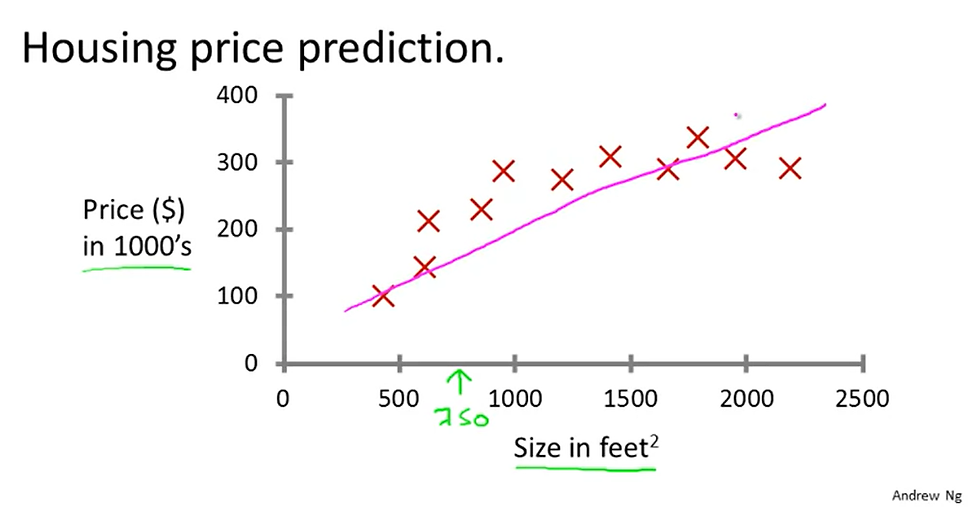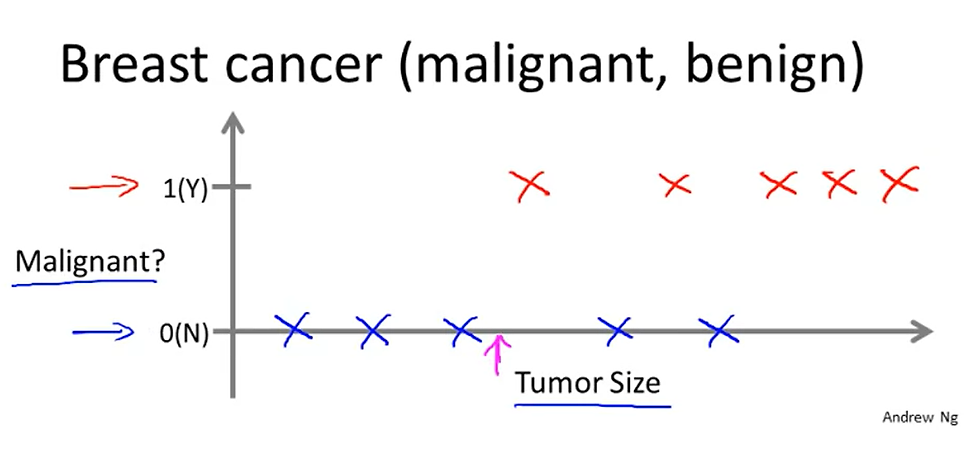ML :: Supervised Learning VS Unsupervised Learning
- Soojin Woo

- 2020년 4월 28일
- 1분 분량
최종 수정일: 2020년 5월 24일
Contents in the post based on the free Coursera Machine Learning course, taught by Andrew Ng.
1. Supervised Learning
There are numerous Machine learning algorithms like reinforcement learning, recommender systems, but one of the most prevalent algorithms is Supervised learning and Unsupervised learning.
And in the case of Supervised learning, it is given 'right answers'.
1.1 Regression problem VS Classification problem
The Regression problem predicts continuous-valued output whereas the classification problem predicts discrete-valued output.

Especially, in the case of a Regression problem, We could remind 'Housing price prediction' example.

In the case of the Classification problem, there is a 'Breast cancer prediction' example. More concretely, there could be two kinds of output like it is 'malignant' or 'benign'. But there could be also more than two outputs depends on the sort of cancer.
2. Unsupervised Learning
Similar to supervised learning, Unsupervised is one of the prevalent ML algorithms. For example, if we consider 'Tumor prediction', through some of the data, the answers are given about whether it is 'malignant' or 'benign'.
1.2 Clustering VS Non-Clustering
On the contrary, Unsupervised learning is something like this. "Here are some of the data, can you find out the specific structure based on these unclassified data?'

Specifically, Unsupervised learning might cluster data into some of the different categories. For example, this algorithm could groups news into relevant news stories.

Also, in Unsupervised learning, there is a Cocktail party problem. And through the Cocktail party problem algorithm, we could separate something like voice or music distinctly from other sounds even if it is recorded in a boisterous environment.





댓글